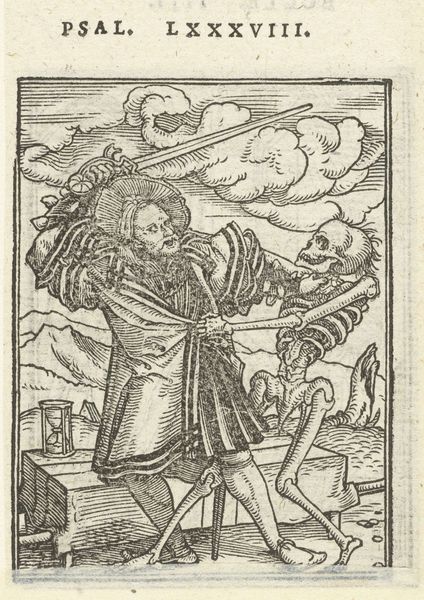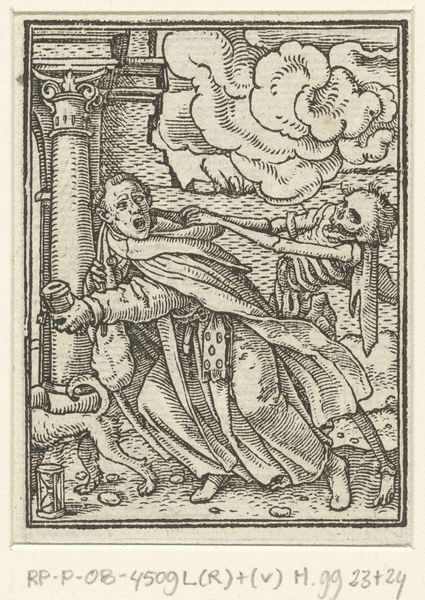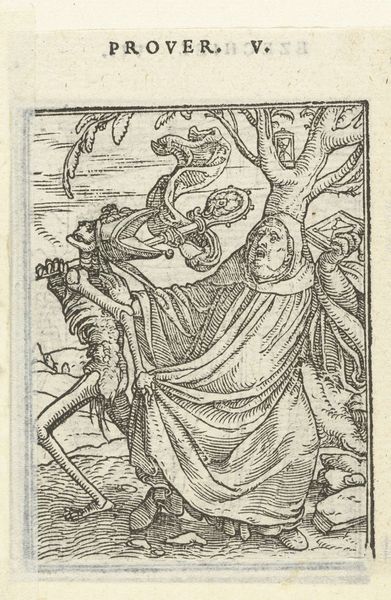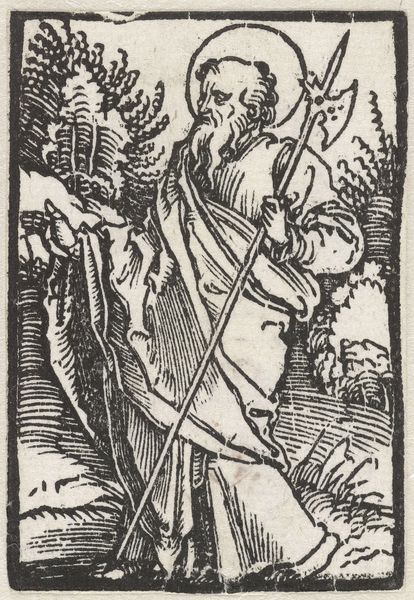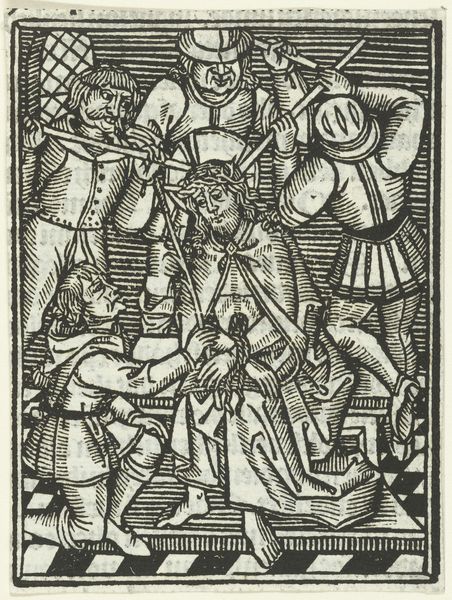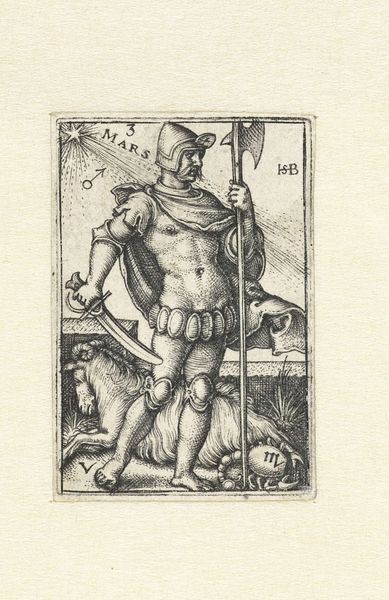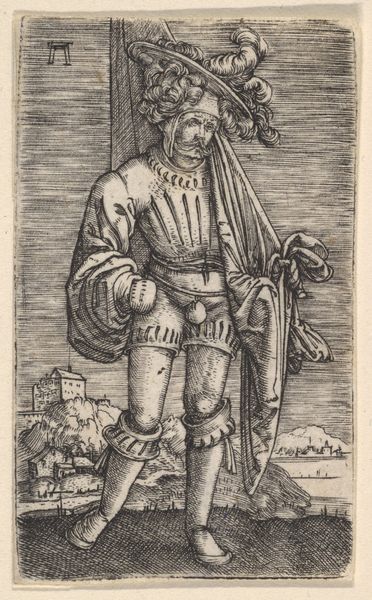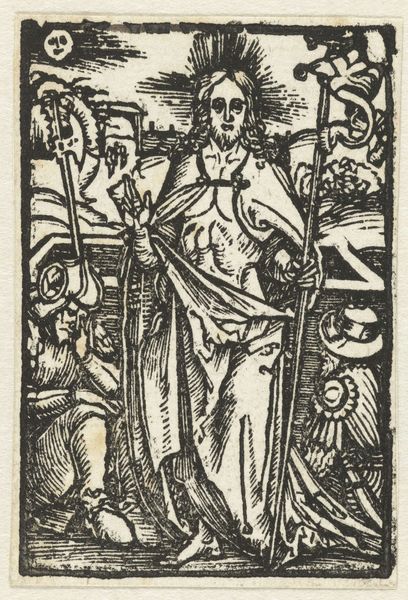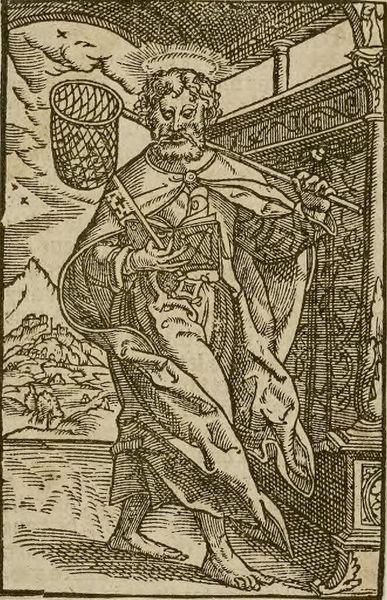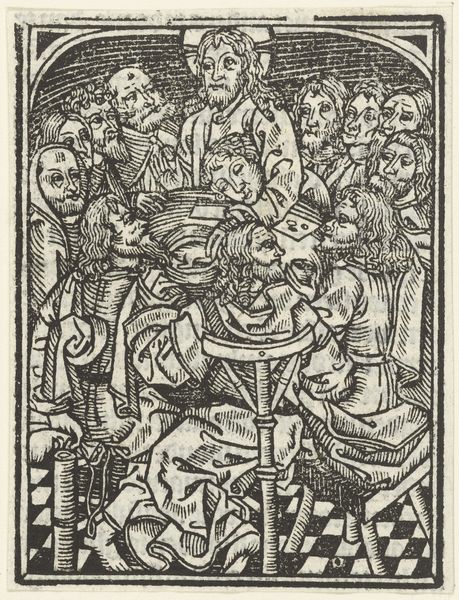
print, woodcut, engraving
#
narrative-art
#
pen drawing
# print
#
pen illustration
#
pen sketch
#
figuration
#
ink line art
#
woodcut
#
line
#
history-painting
#
northern-renaissance
#
engraving
#
christ
Dimensions: height 90 mm, width 68 mm
Copyright: Rijks Museum: Open Domain
Curator: I find myself drawn to the stark, dramatic quality of this piece. The woodcut technique, with its bold lines, really amplifies the central figure, doesn’t it? Editor: It certainly does. This engraving, “Opstanding van Christus” or “Resurrection of Christ”, attributed to the Master of the Delbecq-Schreiber Passion and created between 1490 and 1503, places Christ's emergence front and center against themes of subjugation and the victory of the divine. Curator: Victory indeed! There’s something wonderfully unsettling about seeing Christ casually stepping over those rather bewildered, albeit armed, guards. It’s as if he’s barely registering their existence. The light feels…different. Editor: The work also captures that moment historically in terms of how European societies were processing the shifts happening during the Northern Renaissance. Christ is holding what could be considered a scepter, symbolizing earthly power made divine. And this, along with the armoring of the subjects, speaks directly to power relations in this specific historical context. It shows a very masculine portrayal of Jesus, stepping all over the tools and representations of the men charged with subduing his people. Curator: It's interesting to consider the almost perfunctory halo. Less divine radiance, more…checkbox ticked? I imagine the intended impact was quite different, perhaps, even inspiring or perhaps even more awe-filled to the masses, no? Editor: I think this could act as propaganda against an empire in a number of ways: the empire may try to put down or subvert others' values but this piece sends the strong message that spiritual leaders, if they follow a God like Christ, have all of the real power in their corner. It places this type of God at the forefront. It allows people to view an empowering representation. The art of the period wasn't just for aesthetics; it really shaped cultural perceptions of things like masculinity, dominance and spirituality. Curator: Perhaps this very deliberate message makes it… feel strangely relatable to today's societal dialogues. You feel how those messages reverberate even now? Editor: Absolutely. We continue to wrestle with questions of power, faith, and resistance and images such as these serve as crucial historical touchstones. They give a lot of food for thought about resistance, especially when considering one's spiritual beliefs. Curator: Indeed. The conversation goes on! Editor: Right and may even create inspiration!
Comments
No comments
Be the first to comment and join the conversation on the ultimate creative platform.


